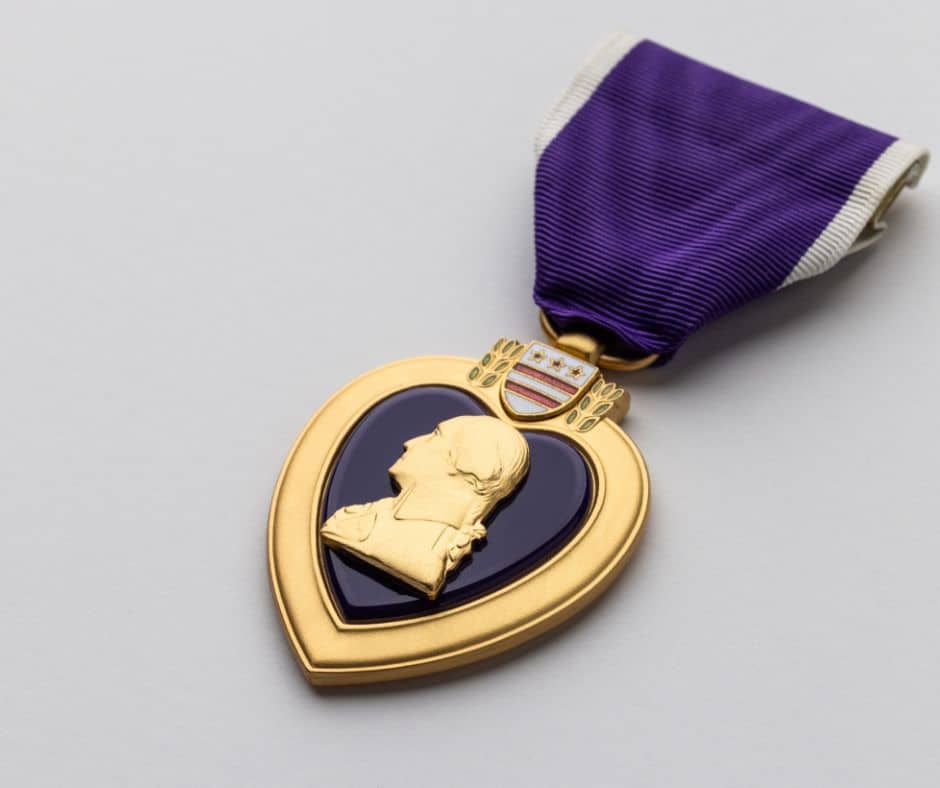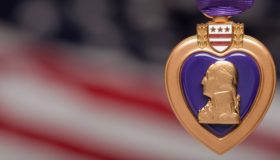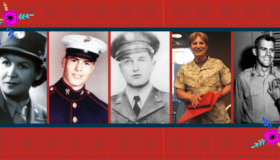The Heart That Bleeds in Silence: Honoring the Heroes of the Purple Heart
August 5, 2025

There are awards given in glory—and then there are honors earned in the crucible of pain. The Purple Heart belongs to the latter.

Every year on August 7, America observes Purple Heart Day. For some, it’s just another commemorative date. For others—Veterans, families, and comrades—it’s a somber reminder of the cost of freedom. This small, purple-and-gold medal, bearing the profile of George Washington, is awarded to those wounded or killed while serving in the U.S. Armed Forces. But to reduce it to just a medal is to misunderstand its gravity. The Purple Heart is not a decoration of valor—it is a recognition of sacrifice. It is not earned through triumph, but through trauma. It is awarded not with applause, but with reverence.
A Brief History Written in Blood
The origins of the Purple Heart trace back to August 7, 1782, when General George Washington created the Badge of Military Merit—the first official military award of the United States. It was a simple heart-shaped piece of cloth, meant to honor “any singularly meritorious action.”
But the badge fell out of use after the Revolutionary War. It wasn’t until 1932—on the bicentennial of Washington’s birth—that it was revived as the Purple Heart, specifically designated to honor those wounded or killed in action. Since then, it has been awarded to over 1.8 million Americans, spanning every major conflict—from World War II to Iraq and Afghanistan, from the Korean DMZ to the deserts of Kuwait.
Purple Heart Moments in History
Some of the most dramatic chapters of American military history are marked by the presence of the Purple Heart. These are the places and moments where sacrifice echoed loudest:
- D-Day, June 6, 1944 – Normandy, France
Over 4,400 Allied troops were killed during the storming of the beaches. Thousands more were wounded, and countless Purple Hearts were awarded that day. Among them was Private First Class Charles DeGlopper, who stood his ground and covered his unit’s retreat, sustaining fatal wounds but saving lives. He was later posthumously awarded the Medal of Honor and the Purple Heart.
- Pearl Harbor, December 7, 1941 – Hawaii
The surprise Japanese attack killed 2,403 Americans and wounded over 1,100. Many of the injured were immediately recognized with Purple Hearts, including crew members aboard the USS Arizona, who went down with their ship while trying to save others.
- Vietnam War – 1960s–1970s
More than 350,000 Purple Hearts were awarded during the Vietnam War. One of the most famous recipients was Colonel Jack H. Jacobs, who received both the Purple Heart and Medal of Honor for pulling his wounded comrades out of harm’s way despite being gravely injured himself.
- Battle of Mogadishu, 1993 – Somalia
Immortalized in the movie Black Hawk Down, this brutal firefight saw U.S. Rangers and Delta Force soldiers cut off and surrounded in the city. Many, including Sergeant First Class Randy Shughart and Master Sergeant Gary Gordon, earned Purple Hearts posthumously after volunteering to protect a downed pilot in a hopeless defense.
- Operation Iraqi Freedom & Operation Enduring Freedom (Afghanistan)
These modern conflicts saw a new generation of warriors earn Purple Hearts, not only from gunfire and shrapnel but also from IEDs, RPGs, and ambushes in urban terrain. Many returned home not only with physical scars, but with invisible ones: PTSD, TBI, survivor’s guilt—wounds equally deserving of remembrance.
Famous Faces, Same Pain
The Purple Heart knows no rank, no fame. Some of its recipients are household names, but their sacrifice is just as personal.
- John F. Kennedy – As a Navy Lieutenant in WWII, he was seriously injured when a Japanese destroyer rammed his PT boat. He swam miles to save a fellow sailor, all while suffering from a severe back injury.
- Senator Tammy Duckworth – A U.S. Army helicopter pilot, Duckworth lost both legs and partial use of her right arm when her Black Hawk was hit by an RPG in Iraq. She has since become a powerful advocate for Veterans.
- Pat Tillman – An NFL player who gave up a multimillion-dollar contract to serve after 9/11. He was killed by friendly fire in Afghanistan in 2004 and posthumously awarded the Purple Heart.
- James Garner, Charles Durning, Rod Serling – Hollywood legends who first earned their Purple Hearts long before they stepped onto sound stages.
The Quiet Ones: Unsung Heroes of the Purple Heart
But for every famous name, there are thousands more you’ll never see on television or read about in a book. They are the backbone of the military’s legacy—the quiet heroes who carried the weight of war and kept going.
First Sergeant Bradley Kasal
- Who he is: A Marine wounded in the infamous November 2004 Fallujah house-clearing operations.
- What happened: Kasal was shot multiple times in the legs and took grenade fragments while bravely shielding a wounded Marine (PFC Alex Nicoll)—a dramatic act captured in an iconic photo.
- After: He survived 21 surgeries, remained on active duty, and eventually transitioned to teaching—serving through the Marine Corps’ JROTC programs in high schools, including in Wisconsin-area schools
Senior Airman Adam Bohl
- Who he is: A Security Forces Airman assigned to Bagram Airfield, Afghanistan.
- What happened: During a base exercise on November 12, 2016, a Taliban suicide bomber infiltrated the perimeter. Bohl and Sgt. Mark Lewis were severely injured by the explosion; both sustained traumatic brain injuries and received Purple Hearts.
- After: Following recovery, Bohl returned to the U.S., continued treatment for TBI, and volunteered at his local VA center—often offering quiet support to fellow veterans.
Captain Antoinette V. Scott
- Who she is: A U.S. Army National Guard nurse who served in Operation Iraqi Freedom.
- What happened: In 2003, while under an IED attack, Scott actively shielded injured patients and evacuated her medical convoy—all while wounded herself, earning a Purple Heart
- After: Though not always in the limelight, Scott’s sacrifice reverberates—she later became an advocate for D.C. statehood and continues uplifting Veterans through speaking and activism.
Their common thread? They didn’t seek recognition. They just did their job. And when asked about the medal, most will say: “I was just lucky to come home.”
Why Purple Heart Day Matters
We live in a time where military service is often applauded, but rarely understood. The Purple Heart is a bridge—a symbol that connects civilians with the price of the freedoms we enjoy daily.
On Purple Heart Day, we don’t need fireworks or parades. What we need is remembrance. A moment of silence. A phone call to a Veteran. A care package. A donation to Soldiers’ Angels. A question asked—and listened to.
Because every Purple Heart tells a story of pain endured so others wouldn’t have to.
The Cost of Courage
If valor is action under fire, then the Purple Heart is the scar left behind. It’s the pain that lingers, the nightmares that return, the prosthetic that replaces the limb, the silence in a family’s dinner table when a chair sits forever empty.
It is a sacred reminder that some gave more than their strength—they gave pieces of themselves.
So, to every soldier, sailor, Airman, Marine, Coast Guardsman, and Guardian who carries that purple mark:
We remember you.
We honor you.
We carry your story.
And for those who never came home—we will never let your memory fade.
Learn more, support the mission, and help honor wounded heroes at SoldiersAngels.org
About the Author

Mike Isaac-Jimenez is a 25-year U.S. Air Force Veteran transitioning into retirement in San Antonio, TX, and currently serving as a SkillBridge intern with Soldiers’ Angels. He holds a B.S. in Technical Management (Project Management) from Embry-Riddle Aeronautical University, along with A.A.S. degrees in Mechanical & Electrical Technology and Mechanical Engineering.


